Blog Posts Tagged Heat Transfer Module

Modeling a Burning Candle, How Would You Do It?
This holiday season most of us will have burned our fair share of candles. The flickering light of candles can really enhance the ambiance and put you in festive spirits. This reminds me of an analysis of a burning candle developed by AltaSim Technologies back in 2010. So, in tune with the holiday cheer, here are some candle physics.
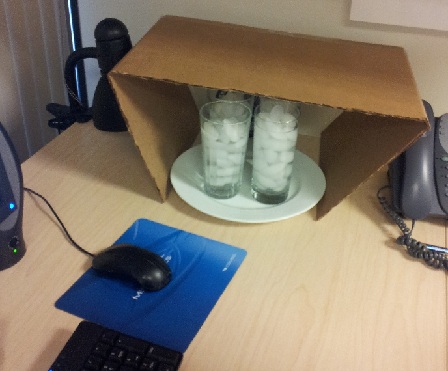
Make-shift Air Conditioner: How Engineers Can Stay Cool at Work (Maybe)
The winter here in Boston has been very mild so far. A few days I would even have liked to have the air conditioning back on. I checked in with one my colleagues to check if he was having an equally hard time staying cool, and to my surprise, he was not. Why? He had constructed a make-shift air conditioner (A/C).

Keynote Video: Multiphysics Simulation for Patient Safety
The second video in our COMSOL Conference Boston 2012 keynote series features Dr. Alan Leewood’s presentation on the use of multiphysics simulation for medical safety applications. The focus of this presentation is on the safety of passive conductive implants during MRI screenings.

First Keynote Video Takes Us to Babel
One of the differences between this year’s COMSOL Conference, and previous years’, is that this year we filmed a lot of it. During the next few weeks we will be publishing some of these videos for those that were there, to enjoy it once again, and for those that weren’t to get a taste of what went on. To kick these all off, I’m proud to present the first keynote video, which takes us to Babel.
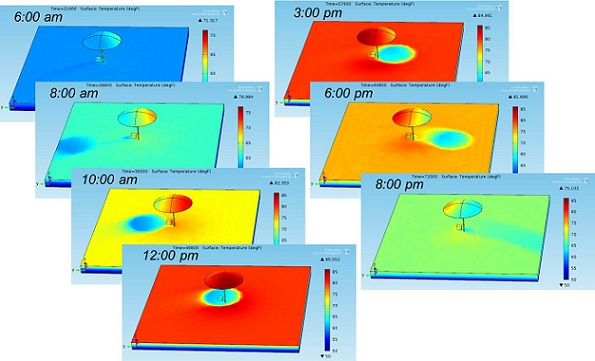
Solar Radiation: How Engineers Can Stay Cool on the Beach (Maybe)
The end of August marks the end of summer here in New England. Already nostalgic and unwilling to let the season go, I decided to look into some “beach physics”. In May we released a new solar radiation feature in our Heat Transfer Module that will be helpful in many solar applications — including how to avoid overheating on the beach, apparently. Here’s how engineers can stay cool on the beach.
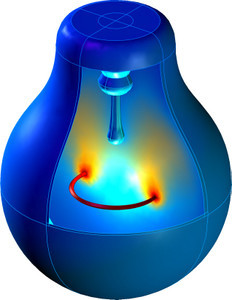
Modeling a Light Bulb, All Forms of Heat Transfer
When it gets dark, you flick on the lights. If you were to model this simple example, you would need to take all forms of heat transfer within consideration; convection, conduction, and radiation are all at play when a light bulb is flicked on.
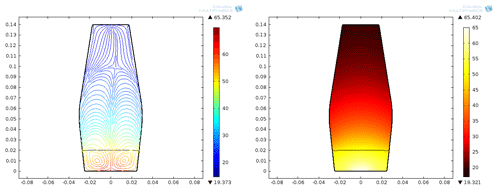
A Closer Look at the Physics Involved in Lava Lamps
Remember those retro desk ornaments of the 1960’s, those lamps filled with colorful wax that began to move when the lamp was lit? I’m talking about lava lamps, or as I like to call them, “Rayleigh–Taylor instability machines”. They may not be popular among today’s youth, but I still own one and I thought it would be interesting to look beyond the dyed blobs of wax and observe the physics involved in lava lamps.
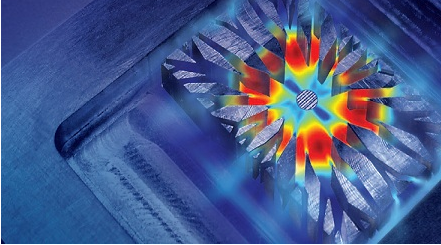
A Cooling Story for These Sweltering Days
I have just come back from a bit of a vacation and boy was it hot! Here, a large part of the US has been going through record high temperatures and most of my time was spent trying to keep cool. How nice then to mention a story about cooling.
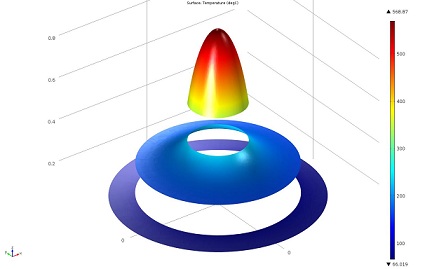
Space Fuel: Oak Ridge National Laboratory to Produce Plutonium-238
The end of July marks the beginning of a $20 million R&D project led by the Oak Ridge National Laboratory (ORNL) to produce and process plutonium-238. The U.S. space program will be using the Pu-238 that is to be produced by ORNL as fuel for future deep-space missions.

Inventing Makes use of Simulation
One of the interesting stories to come out of the latest COMSOL News concerned a couple of great researchers, Dr. Ozgur Yildirim and Dr. Zihong Guo, and how they use simulations in their inventing process. They work in an invention/prototype laboratory in Bellevue, WA for Intellectual Ventures, a global leader in the business of invention.
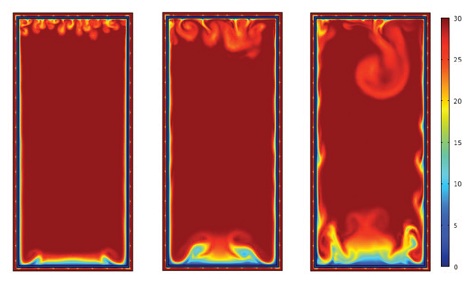
A Cool Way to Consider the Environment
According to a study done by Brunel University in the United Kingdom, the food sector is among the top five energy-consuming industries. The transportation of food, including keeping it refrigerated, is one of the larger contributing factors to this energy-consumption and subsequent greenhouse gas emissions.
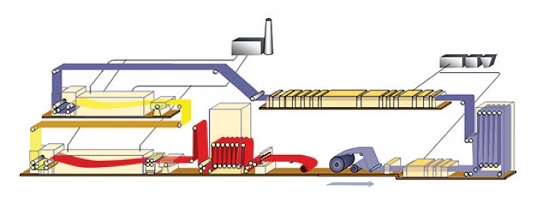
Giving the Power of COMSOL to the Operator
COMSOL News is now available in print and electronically, and you can request your copy of the multiphysics simulation magazine here. One of the great stories concerns a process engineer at Ruukki Metals in Finland, Mika Judin, who not only uses COMSOL to model and optimize his process, but lets the operators use the simulation too.
